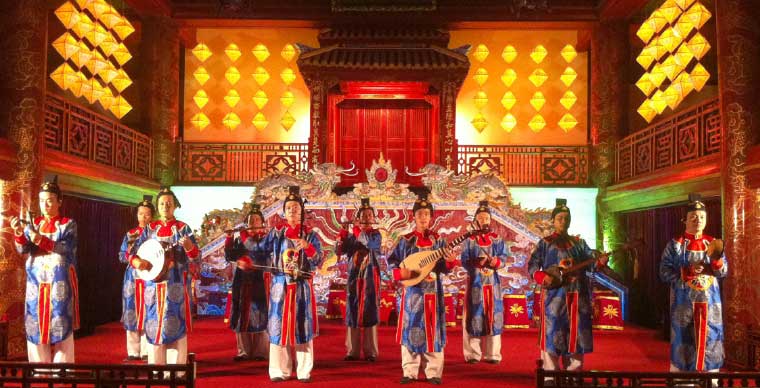
Nha Nhac - Hue Royal Court Music
- on Dec 27, 2018 By: LucyH
According to the assessment of UNESCO, "Among the numerous musical genres that developed in Vietnam, only Nha Nhac can claim a nationwide scope and strong links with the traditions of other East Asian countries". This is absolutely an ideal experience for your Hue - Hoi An trip in a small group.
Category:
About Hue Royal Court Music
Hue Royal Dancing
Instrument used in Nha Nhac
The feature of Hue Royal Court Music
Where to enjoy Nha Nhac in Hue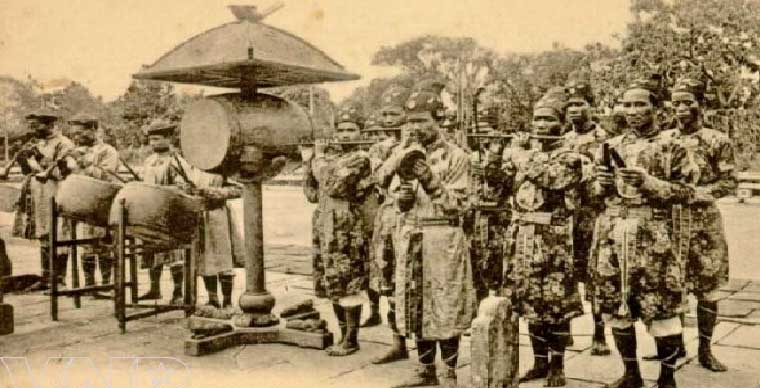
Hue Royal Court Music
Along with the Space of Gong culture in the Central Highlands, Hue Royal Court Music is an intangible heritage of Vietnam officially recognized by UNESCO. The music itself is a successor, since the orchestras - in which many royal musical instruments are present - appear in the form of sculptures on the stone pedestals that contain pillars of pagoda from the Ly Dynasty in the XI and XII centuries to the time the last king of the Nguyen Dynasty abdicated in the mid-twentieth century.
"Court music" in the usual sense is understood as a music genre, including the types of music that accompany dancing and performing, used in rituals, official receptions, national holidays due to the court organized and to entertain the king and the royal family. About the name "Nha Nhac" (elegant music) it’s used by feudal dynasties in Vietnam starting with the Ho dynasty, with different functions: sometimes to imply the royal music in general, sometimes the royal music festival in particular.
Vietnamese court music was formally formed with the rise of the Nguyen dynasty in the early 19th century. However, the initial foundation of Vietnamese royal court music began to undergo the 17th century under Nguyen Lords’ reign in the Cochinchina. The most flourishing period of Hue royal music was the first half of the 19th century until King Tu Duc's reign (1848-1883). Around 1947-1948, Empress Tu Cung (King Bao Dai's mother, wife of Khai Dinh's king) gathered a number of royal artists from King Bao Dai's time, whereby some styles of royal music and royal dancing were maintained. In the 80s of the 20th century, Hue royal court music began to receive the attention of the Ministry of Culture and the local authorities. In the 90s, Hue royal court music entered the renaissance stage. Since then, this art has been introduced in many parts of the world.
The Hue royal court musicgenres include: worshiping ritual music and ritual ceremonial music, royal court dance, chamber music and royal theatrical play performance (Royal Tuong).Hue Royal Dancing
Hue Royal dancing has existed and developed in the process of establishing and stabilizing the dynasties. This form of dancing is only for the elite class which has relatively stable performance, techniques, high difficulty and professionalism. There are eleven court dances still exist today such as the female dance (Tra Kieu), the royal court dance scene (Cham), the four
holy beastsdance, lantern dance etc.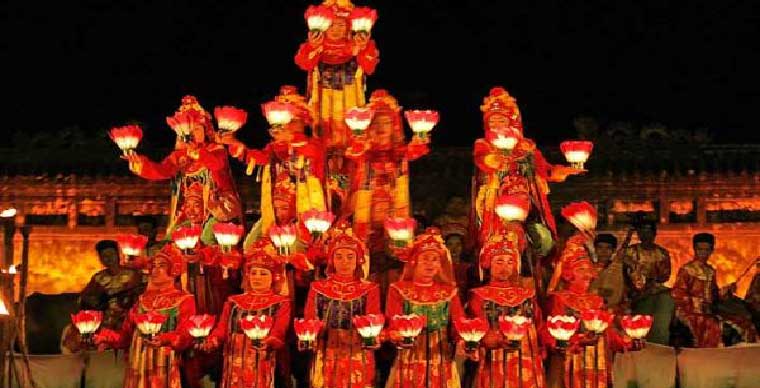
Royal Court Instrument
The orchestras of the Nguyen Dynasty are mainly divided into The great orchestra and the Minor orchestra. All orchestras have specific instruments including more than 30 types with the numbers of over hundreds of instruments. For example, the Great Orchestra has up to 42 instruments of 4 types of percussion instruments and wind instruments. Particularly, only vibrating membrane already includes 20 drums. Hue royal court music was the successor developed from the achievements of Thang Long royal court music showing in maintaining a number of royal court orchestras of the previous dynasties and creating new the variations on the basis of the orchestras of the Le Dynasty.
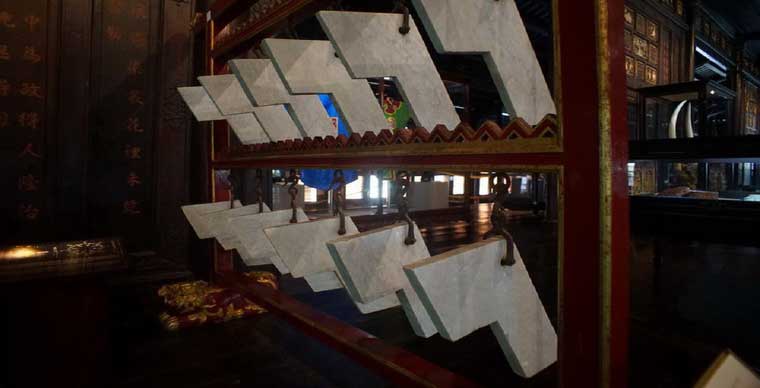
The feature of Hue Royal Court Music
The features of the Hue royal court music are the integration, acculturation of Chinese and Cham culture also the influences of Buddhism and Confucianism. Royal dancing is closely related to Tuong (royal theatrical play performance). Hue royal court music in which contains the richness and diversity in many aspects: the type of art, genre, type of musical instrument and timbre, model, orchestral organizing structure and harmony forms performances, melody etc. So coming to Hue royal court music people will have many "dishes" to change "taste" not only for hearing but also for seeing.
Hue royal court music has a large scale and high professionalism: is the official music of the country, has many orchestras and repertoire of royal music and dance performances including many types of musical instruments and performances. In addition, this is also a kind of music with improvisation, flexible transformation and high academic character.
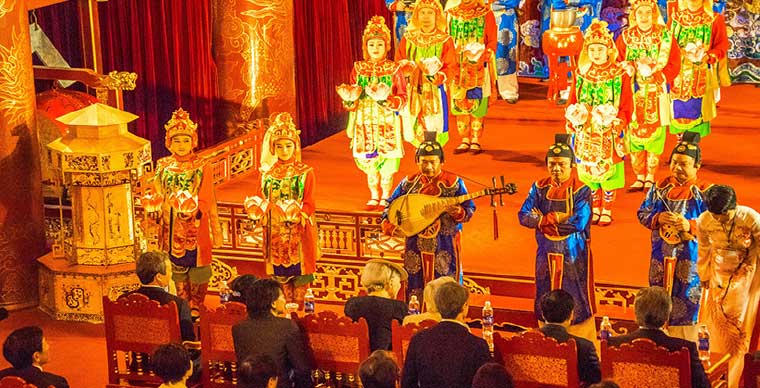
Where to watch Nha Nhac - Hue Royal Court Music?
Duyet Thi Duong Theater
Duyet Thi Duong locates in the Inner Court of Imperial city of Hue. This is a large-scale theater, built earlier than other theaters in Hue Citadel. It was used to perform theater arts in order to serve the king, the royal family, the gods and the foreign guests who have relations with the court.Ticket to watch Nha Nhac in Duyet Thi Duong Theater
Single ticket to watch Nha Nhac (Royal Dancing - Royal Tuong): 200,000 VND / person / 01 ticket (01 bottle of mineral water included)Single ticket At Duyet Thi Duong - Hue Citadel 60 minutes - 01 bottle of mineral water included 200,000 VND Ticket for private booking
At Duyet Thi Duong - Hue Citadel 60 minutes Under 30 guests 8,000,000 VND
At Duyet Thi Duong - Hue Citadel 60 minutes From 30 - under 100 guests 10,000,000VND At Duyet Thi Duong - Hue Citadel 60 minutes - from 100 guests and above separate agreement Performing schedule Morning From 10:00AM - 10:40AM Related articles:
One day in Hue
Hue Imperial city - A to Z Travel guide
Perfume River Hue - A Cruise on Royal Emperor Dragon Boat with Dinner
Tu Hieu Pagoda - The place where Zen master Thich Nhat Hanh spends the rest of his life
Thien Mu Pagoda - Pagoda of the Celestial Lady
Thuan An beach A-Z Travel guide
10 things to do in Hue
Comment
Other Blog
Categories
Latest News
on 27 Apr, 2023      
on 15 Apr, 2023      
on 28 Mar, 2023      
 Español
Español Français
Français








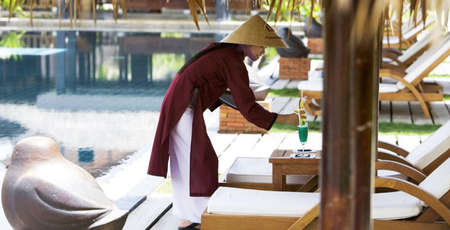
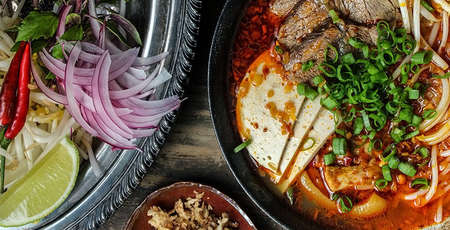
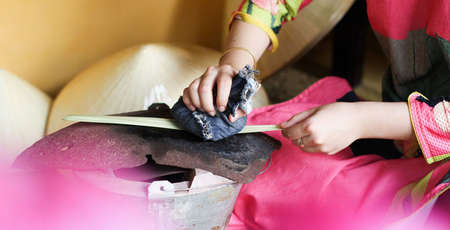

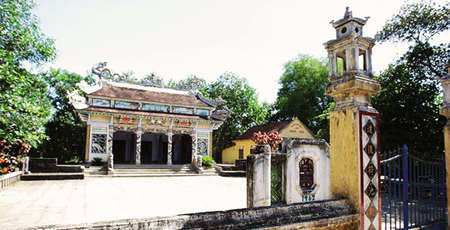







F
on Jan 3, 2024Igor Mozetic
on Apr 8, 2023Ira Beale
on Feb 10, 2023Phạm Phú Toàn
on Jan 28, 2023Max Stover
on Jan 11, 2023